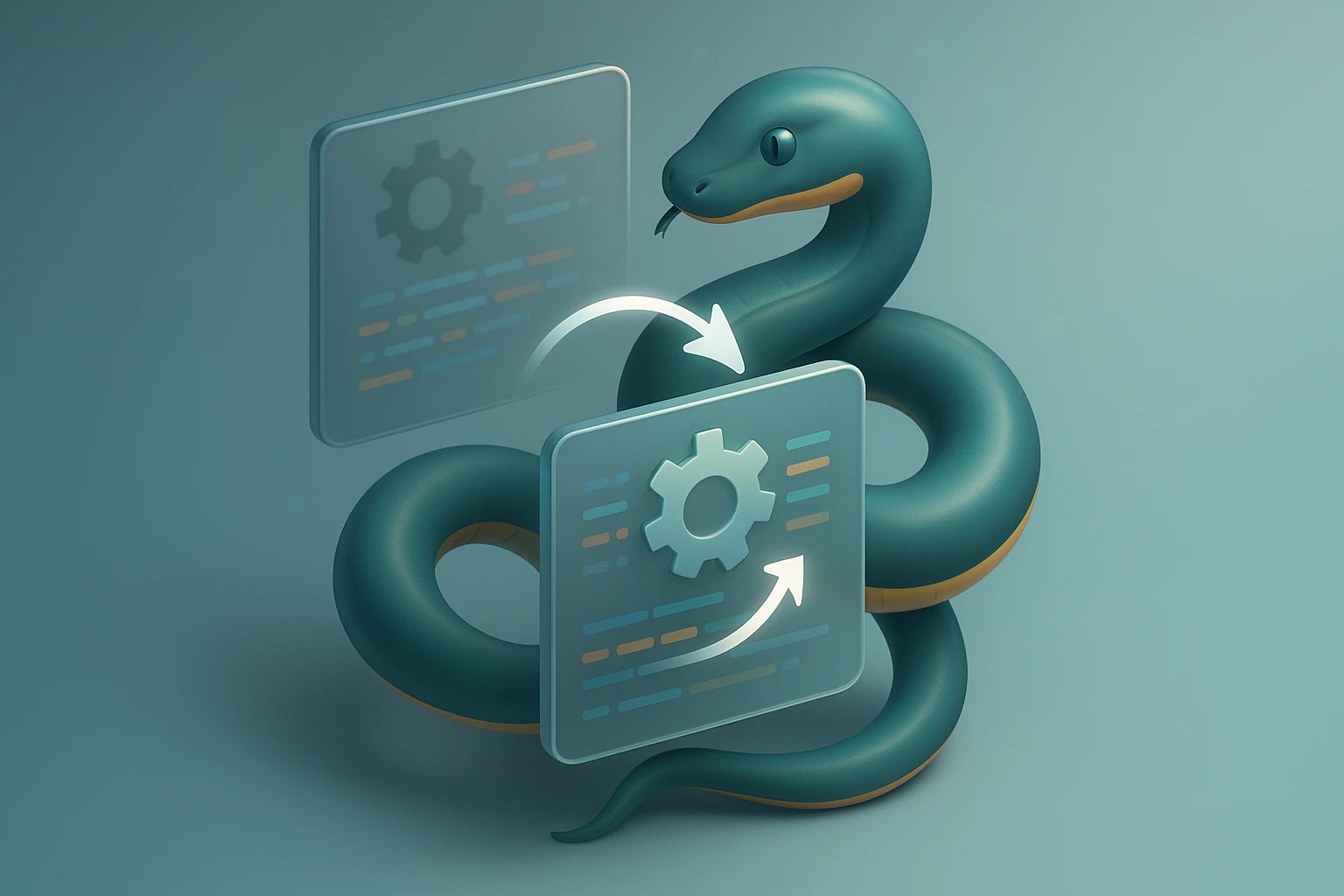How to Use break and continue in Loops
Illustration of loop control: 'break' exits the loop immediately when a condition is met; 'continue' skips the current iteration and proceeds to the next with code and flow arrows.

How to Use break and continue in Loops
Mastering Loop Control: Understanding break and continue Statements
Loop control mechanisms are fundamental building blocks in programming that allow developers to write more efficient, readable, and maintainable code. When working with repetitive tasks, understanding how to properly interrupt or skip iterations can mean the difference between elegant code and convoluted logic filled with unnecessary conditions. These control flow statements give you precise command over loop execution, enabling you to respond dynamically to changing conditions within your iterations.
The break and continue statements are specialized keywords that alter the normal flow of loop execution. While loops naturally run until their condition becomes false, these statements provide early exit points or allow selective iteration skipping. Think of break as an emergency exit that immediately terminates the entire loop, while continue acts like a skip button that jumps to the next iteration without executing the remaining code in the current cycle.
Throughout this comprehensive guide, you'll discover practical applications, best practices, and real-world scenarios where these control statements shine. We'll explore implementation across different programming languages, examine performance considerations, analyze common pitfalls, and provide actionable examples that you can immediately apply to your projects. Whether you're processing data collections, searching for specific values, or implementing complex business logic, mastering these tools will elevate your programming capabilities.
Understanding the break Statement
The break statement serves as a powerful mechanism to terminate loop execution prematurely. When encountered, it immediately exits the innermost loop containing it, transferring control to the statement following the loop structure. This behavior proves invaluable when you've found what you're searching for, encountered an error condition, or determined that continuing iteration would be pointless or harmful.
In practical terms, break prevents unnecessary computation cycles. Imagine searching through a database of thousands of records for a specific user ID. Once found, continuing to iterate through remaining records wastes processing power and time. The break statement elegantly solves this by terminating the search immediately upon success.
"Effective use of break statements can reduce algorithm complexity from O(n) to O(1) in best-case scenarios, dramatically improving application performance when dealing with large datasets."
Basic Syntax and Implementation
The syntax for break remains remarkably consistent across programming languages. In most C-style languages including JavaScript, Java, C++, and C#, you simply write break; as a standalone statement within your loop body. Python follows the same convention, making it one of the most universally recognized control statements.
// JavaScript example
for (let i = 0; i < 100; i++) {
if (i === 50) {
break; // Exits loop when i reaches 50
}
console.log(i);
}
# Python example
for i in range(100):
if i == 50:
break # Exits loop when i reaches 50
print(i)When working with nested loops, break only affects the immediate loop containing it. To exit multiple loop levels, you'll need either multiple break statements with conditional logic or alternative approaches like labeled breaks (in languages that support them) or refactoring into functions where return statements can exit multiple levels simultaneously.
Common Use Cases for break
⭐ Search Operations: When searching for a specific element in a collection, break immediately after finding the target eliminates unnecessary iterations. This pattern appears frequently in linear search algorithms, user lookup operations, and data validation scenarios.
⭐ Error Handling: When detecting invalid data or error conditions during iteration, break allows you to stop processing and handle the error appropriately. This prevents cascading failures and makes debugging easier by stopping execution at the point of failure.
⭐ Resource Management: When working with limited resources like file handles, network connections, or memory buffers, break helps implement early termination when resource limits are reached or when continuation would exceed capacity constraints.
⭐ User Interruption: In interactive applications, break enables responsive interfaces by allowing users to cancel long-running operations. This improves user experience by preventing applications from appearing frozen or unresponsive.
⭐ Conditional Aggregation: When accumulating values until a threshold is met, break provides clean exit logic once the condition is satisfied, preventing over-accumulation and maintaining data integrity.
| Scenario | Without break | With break | Performance Gain |
|---|---|---|---|
| Searching 10,000 items (target at position 100) | 10,000 iterations | 100 iterations | 99% reduction |
| Validation with early failure (fails at 5%) | Full dataset processing | ~5% processing | 95% reduction |
| Finding first match in sorted data | O(n) worst case | O(1) best case | Variable, potentially massive |
| Accumulating until threshold (threshold at 20%) | 100% iteration | ~20% iteration | 80% reduction |
Understanding the continue Statement
The continue statement offers a more nuanced approach to loop control by skipping the remainder of the current iteration and immediately proceeding to the next one. Unlike break, which exits the loop entirely, continue maintains the loop's execution but bypasses specific iterations based on conditional logic. This selective iteration proves essential when processing collections where only certain elements require action.
Consider processing a list of user records where you need to perform operations only on active accounts. Rather than wrapping your entire processing logic in conditional statements, continue allows you to skip inactive accounts at the beginning of each iteration, keeping your core logic clean and readable.
"Using continue statements strategically reduces nested conditional depth, leading to code that follows the principle of early returns and maintains lower cyclomatic complexity."
Syntax and Behavior Patterns
The continue statement follows the same simple syntax pattern as break across most programming languages. When executed, it immediately jumps to the loop's condition check (in while loops) or to the increment expression (in for loops), bypassing any remaining code in the current iteration.
// JavaScript example with continue
for (let i = 0; i < 10; i++) {
if (i % 2 === 0) {
continue; // Skip even numbers
}
console.log(i); // Only prints odd numbers
}
# Python example with continue
for i in range(10):
if i % 2 == 0:
continue # Skip even numbers
print(i) # Only prints odd numbersUnderstanding the exact point where execution resumes is crucial. In for loops, continue jumps to the increment expression before checking the condition. In while loops, it jumps directly to the condition check. This distinction matters when your increment logic resides within the loop body rather than in the for statement itself.
Practical Applications of continue
Data Filtering: When processing datasets with mixed valid and invalid entries, continue enables inline filtering without complex nested conditions. This approach maintains readability while efficiently handling heterogeneous data sources.
Conditional Processing: In scenarios where different data types or categories require different handling, continue helps route execution flow by skipping categories that don't need processing in the current context. This pattern appears frequently in parsers, validators, and data transformation pipelines.
Performance Optimization: By skipping unnecessary computations for certain iterations, continue reduces overall processing time. When combined with early condition checking, it minimizes resource consumption for items that don't require full processing.
"The continue statement transforms complex nested if-else structures into linear, readable code by inverting conditional logic and handling exceptions first."
Code Clarity and Maintainability
One of continue's most valuable contributions is improved code readability. By handling exceptional cases or skip conditions at the beginning of loop bodies, you create a pattern known as "guard clauses" that keeps the main logic unindented and easier to follow.
// Without continue - nested logic
for (let user of users) {
if (user.isActive) {
if (user.hasPermission) {
if (user.emailVerified) {
// Main processing logic deeply nested
processUser(user);
}
}
}
}
// With continue - flat structure
for (let user of users) {
if (!user.isActive) continue;
if (!user.hasPermission) continue;
if (!user.emailVerified) continue;
// Main processing logic at top level
processUser(user);
}This pattern reduces cognitive load by eliminating the need to track multiple nested condition levels. Developers can immediately understand what conditions cause iteration skipping without parsing complex boolean expressions.
Comparing break and continue
While both statements modify loop execution flow, their purposes and effects differ fundamentally. Understanding when to use each requires recognizing the distinction between terminating all future iterations versus skipping only the current one.
| Aspect | break Statement | continue Statement |
|---|---|---|
| Primary Purpose | Terminate loop execution completely | Skip current iteration, proceed to next |
| Execution Flow | Exits to statement after loop | Jumps to loop condition/increment |
| Best Used When | Target found, error encountered, condition met | Filtering, selective processing, conditional skipping |
| Performance Impact | Can significantly reduce iterations | Reduces operations per iteration |
| Code Readability | Signals definitive completion | Enables guard clause pattern |
| Common Pitfalls | Skipping cleanup code, nested loop confusion | Infinite loops with misplaced increment |
Decision Framework
Choose break when: You've found what you're looking for and continuing serves no purpose. The goal has been achieved, an error requires immediate attention, or a threshold has been crossed that makes further iteration meaningless or harmful.
Choose continue when: You're filtering a collection and need to process only certain items. The current item doesn't meet criteria but remaining items might. You want to skip specific cases while maintaining the loop's overall execution.
"The choice between break and continue often reflects the difference between searching for something specific versus processing a filtered subset of data."
Advanced Patterns and Techniques
Beyond basic usage, break and continue enable sophisticated control flow patterns that solve complex programming challenges. Mastering these advanced techniques separates proficient programmers from beginners.
Labeled Statements and Multi-Level Control
JavaScript and Java support labeled statements, allowing break and continue to affect outer loops in nested structures. This feature provides precise control over which loop level to exit or skip, though it should be used judiciously as it can reduce code clarity.
// JavaScript labeled break example
outerLoop: for (let i = 0; i < 5; i++) {
for (let j = 0; j < 5; j++) {
if (i === 2 && j === 2) {
break outerLoop; // Exits both loops
}
console.log(`i: ${i}, j: ${j}`);
}
}While powerful, labeled statements can make code harder to follow. Consider refactoring into separate functions where return statements can achieve similar results with clearer intent.
State Machine Implementation
Break and continue prove invaluable when implementing state machines within loops. By using these statements strategically, you can create clean state transitions without deeply nested conditionals.
let state = 'INIT';
const data = ['start', 'process', 'validate', 'error', 'end'];
for (let command of data) {
if (state === 'ERROR') break; // Stop on error state
if (command === 'skip') continue; // Skip certain commands
// Process state transitions
switch(state) {
case 'INIT':
if (command === 'start') state = 'PROCESSING';
break;
case 'PROCESSING':
if (command === 'error') state = 'ERROR';
else if (command === 'validate') state = 'VALIDATING';
break;
// Additional states...
}
}Optimization Techniques
Early Termination in Search Algorithms: When implementing search operations, combining break with sorted data structures enables logarithmic performance improvements. Once you've passed the possible location of your target in sorted data, break prevents unnecessary comparisons.
Batch Processing with Thresholds: In data processing pipelines, use break to implement batch size limits or time-based processing windows. This ensures responsive applications that don't block for extended periods.
Resource-Aware Iteration: Monitor resource consumption within loops and use break to prevent memory overflow or timeout scenarios. This defensive programming technique improves application stability.
Common Pitfalls and Best Practices
Even experienced developers encounter issues when using loop control statements. Understanding these common mistakes helps you write more robust code.
The Infinite Loop Trap
When using continue in while loops, ensure your increment logic executes before the continue statement. Placing continue before incrementing the loop counter creates infinite loops.
// WRONG - Infinite loop
let i = 0;
while (i < 10) {
if (i % 2 === 0) {
continue; // i never increments for even numbers
}
i++;
}
// CORRECT - Proper increment placement
let i = 0;
while (i < 10) {
if (i % 2 === 0) {
i++; // Increment before continue
continue;
}
i++;
}Cleanup Code Considerations
Using break can bypass important cleanup operations if placed incorrectly. Always ensure critical cleanup code executes regardless of how the loop exits.
"Placing cleanup logic after loops rather than within them ensures proper resource management even when break statements cause early termination."
Readability Guidelines
🔹 Limit Nesting Depth: Avoid using break or continue within multiple levels of nested conditionals inside loops. This creates difficult-to-follow logic paths.
🔹 Comment Intent: When break or continue statements aren't immediately obvious, add comments explaining why execution should stop or skip.
🔹 Consider Alternatives: Sometimes extracting loop bodies into separate functions with return statements creates clearer code than complex break/continue logic.
🔹 Consistent Patterns: Establish team conventions for when to use these statements. Consistency across a codebase improves maintainability.
🔹 Test Edge Cases: Pay special attention to testing scenarios where break or continue execute on first or last iterations, as these often reveal logic errors.
Performance Considerations
While break and continue can improve performance by reducing unnecessary operations, they aren't free. Each conditional check adds overhead. Profile your code to ensure optimization attempts actually improve performance rather than adding complexity without benefit.
In tight loops executing millions of times, even small conditional checks become significant. Consider whether filtering data before the loop or using more efficient data structures might provide better performance gains than runtime conditional checking.
Language-Specific Variations
While the core concepts remain consistent, different programming languages implement break and continue with subtle variations worth understanding.
Python Peculiarities
Python offers a unique feature: the else clause on loops. This clause executes only if the loop completes normally without encountering a break statement. This enables elegant search patterns.
for item in collection:
if item == target:
print("Found!")
break
else:
print("Not found") # Only runs if break never executedJavaScript Considerations
JavaScript's array methods like forEach() don't support break or continue. You must use traditional for loops, for...of loops, or alternative methods like some() or every() that allow early termination through return values.
Java and C# Similarities
Both languages support labeled breaks and continues, providing fine-grained control over nested loop structures. They also enforce stricter type checking, preventing some common errors possible in dynamically-typed languages.
Real-World Implementation Examples
Examining practical applications demonstrates how these concepts solve actual programming challenges.
User Authentication System
function authenticateUser(username, password, attempts) {
for (let i = 0; i < attempts.length; i++) {
const attempt = attempts[i];
// Skip attempts from blocked IPs
if (isBlocked(attempt.ip)) {
continue;
}
// Check credentials
if (attempt.username === username &&
verifyPassword(attempt.password, password)) {
logSuccessfulLogin(attempt);
break; // Stop checking once authenticated
}
// Log failed attempt
logFailedAttempt(attempt);
}
}Data Processing Pipeline
function processRecords(records, maxErrors = 5) {
let errorCount = 0;
for (let record of records) {
// Skip already processed records
if (record.status === 'processed') {
continue;
}
try {
validateRecord(record);
transformRecord(record);
saveRecord(record);
} catch (error) {
errorCount++;
logError(record, error);
// Stop if too many errors
if (errorCount >= maxErrors) {
console.error('Error threshold reached');
break;
}
}
}
return errorCount;
}Game Loop with State Management
function gameLoop(entities, gameState) {
for (let entity of entities) {
// Skip inactive entities
if (!entity.active) continue;
// Skip entities outside viewport
if (!isVisible(entity, gameState.camera)) continue;
// Update entity
entity.update(gameState.deltaTime);
// Check for game over condition
if (entity.type === 'player' && entity.health <= 0) {
gameState.status = 'GAME_OVER';
break; // Stop processing when game ends
}
// Render entity
entity.render(gameState.context);
}
}Testing and Debugging Strategies
Proper testing of code containing break and continue statements requires careful consideration of all possible execution paths.
Coverage Testing
Ensure your test suite covers scenarios where break and continue execute at different points in the loop. Test first-iteration breaks, last-iteration breaks, and mid-loop breaks. Similarly, verify continue statements work correctly at various iteration points.
Debugging Techniques
When debugging loops with control statements, use logging to track which iterations execute and which are skipped. Modern debuggers allow conditional breakpoints that trigger only when specific iterations execute, making it easier to diagnose issues.
// Debug logging example
for (let i = 0; i < items.length; i++) {
console.log(`Iteration ${i} starting`);
if (shouldSkip(items[i])) {
console.log(`Iteration ${i} skipped via continue`);
continue;
}
if (shouldStop(items[i])) {
console.log(`Loop terminated at iteration ${i} via break`);
break;
}
processItem(items[i]);
console.log(`Iteration ${i} completed`);
}Unit Testing Patterns
Create focused unit tests that verify break and continue behavior in isolation. Mock or stub external dependencies to ensure tests remain fast and deterministic.
"Comprehensive testing of loop control statements requires thinking about not just what executes, but what doesn't execute and why."
Performance Profiling and Optimization
Understanding the performance implications of break and continue helps you write efficient code, but measurement beats assumption every time.
Benchmarking Approaches
When optimizing loops, create benchmarks comparing implementations with and without control statements. Measure actual execution time rather than assuming theoretical performance gains.
// Benchmark example
function benchmarkSearch(data, target) {
const iterations = 1000000;
// Without break
console.time('without-break');
for (let i = 0; i < iterations; i++) {
let found = false;
for (let item of data) {
if (item === target) found = true;
}
}
console.timeEnd('without-break');
// With break
console.time('with-break');
for (let i = 0; i < iterations; i++) {
for (let item of data) {
if (item === target) break;
}
}
console.timeEnd('with-break');
}Memory Considerations
Break and continue themselves don't significantly impact memory usage, but they can prevent memory accumulation by stopping processing early. When building result collections within loops, early termination via break prevents unnecessary memory allocation.
Architectural Considerations
At the architectural level, heavy reliance on break and continue might indicate opportunities for refactoring into more maintainable structures.
Functional Alternatives
Modern programming increasingly favors functional approaches using methods like filter(), map(), reduce(), find(), and some(). These often provide clearer intent than imperative loops with control statements.
// Imperative with break
function findFirstEven(numbers) {
for (let num of numbers) {
if (num % 2 === 0) {
return num;
// break would work here too
}
}
return null;
}
// Functional alternative
function findFirstEven(numbers) {
return numbers.find(num => num % 2 === 0) ?? null;
}When to Refactor
Consider refactoring when you encounter multiple break or continue statements in a single loop, deeply nested loops with control statements at multiple levels, or loops where the control flow becomes difficult to trace. These scenarios often benefit from extraction into separate functions or conversion to functional patterns.
Security Implications
Loop control statements can have security implications, particularly in input validation and resource management scenarios.
Denial of Service Prevention
Use break to implement timeouts and iteration limits that prevent denial of service attacks through maliciously crafted input designed to cause excessive processing.
function processUserInput(input, maxIterations = 10000) {
let iterations = 0;
for (let char of input) {
iterations++;
// Prevent DoS through excessive iterations
if (iterations > maxIterations) {
throw new Error('Input too complex');
break;
}
processCharacter(char);
}
}Input Validation
Continue statements help implement robust input validation by skipping invalid entries while processing remaining data, preventing partial failures from blocking entire operations.
Documentation and Code Comments
Proper documentation of loop control flow helps maintain code over time and assists other developers in understanding your intent.
Comment Best Practices
Document why break or continue statements exist, not just what they do. Explain the business logic or performance reasoning behind early termination or iteration skipping.
for (let transaction of transactions) {
// Skip transactions already reconciled in previous batch
// to avoid duplicate processing charges
if (transaction.reconciled) continue;
processTransaction(transaction);
// Stop processing if we've hit the API rate limit
// to prevent account suspension
if (apiCallCount >= API_RATE_LIMIT) {
logRateLimitReached();
break;
}
}What happens if I use break in a nested loop?
Break only exits the innermost loop containing it. If you have nested loops and use break in the inner loop, execution continues in the outer loop at the next iteration. To exit multiple loop levels, you need either labeled breaks (in languages supporting them), multiple break statements with flags, or refactoring to use function returns.
Can I use break or continue in forEach loops?
No, JavaScript's forEach() method doesn't support break or continue statements. Using them will cause syntax errors. Instead, use traditional for loops, for...of loops, or array methods like some() or every() that support early termination through return values. The some() method stops when you return true, while every() stops when you return false.
How do break and continue affect loop performance?
Break can significantly improve performance by eliminating unnecessary iterations, especially in search operations or when processing large datasets. Continue reduces operations within iterations but maintains the iteration count. The performance impact depends on your specific use case - profile your code to measure actual improvements rather than assuming theoretical gains.
Is it bad practice to use multiple break statements in one loop?
Multiple break statements aren't inherently bad, but they can indicate complex logic that might benefit from refactoring. If you have many break conditions, consider whether the loop's purpose is clear or if extracting the loop body into a separate function with return statements would improve readability. The key is maintaining code clarity and ease of maintenance.
What's the difference between break and return in a loop?
Break exits the loop but continues executing code after the loop within the same function. Return exits the entire function immediately, terminating both the loop and the function. Use break when you want to stop the loop but continue function execution afterward. Use return when the loop's purpose is complete and the function should end. Return is more powerful but less granular than break.
Can I use break or continue with while loops?
Yes, both break and continue work with while loops exactly as they do with for loops. Break exits the while loop entirely, while continue jumps back to the condition check. Be especially careful with continue in while loops to ensure your increment logic executes before the continue statement, otherwise you risk creating infinite loops.
How do I break out of multiple nested loops without labels?
Without labeled breaks, you can use a flag variable that outer loops check after inner loops complete, refactor the nested loops into a separate function where return exits all levels, throw and catch an exception (though this is generally not recommended for control flow), or restructure your algorithm to avoid deep nesting. The function extraction approach is usually cleanest and most maintainable.
Are there performance costs to using break and continue?
The statements themselves have negligible performance cost - they're simple jump instructions. However, the conditional checks that determine whether to execute them do have costs. In extremely tight loops running millions of times, even simple conditionals matter. The performance benefit from reduced iterations or operations typically far outweighs the cost of the conditional checks, but profile your specific use case to be certain.




